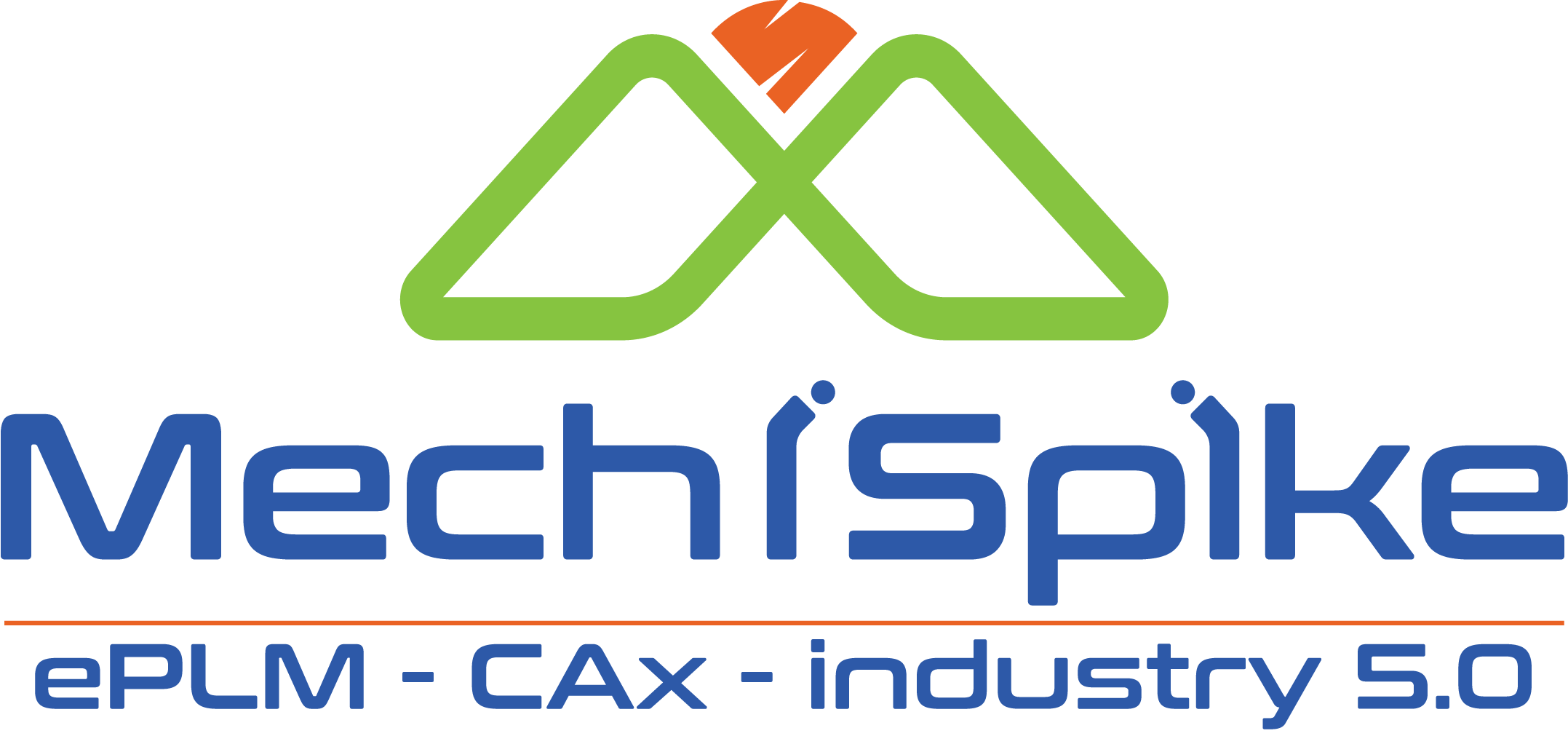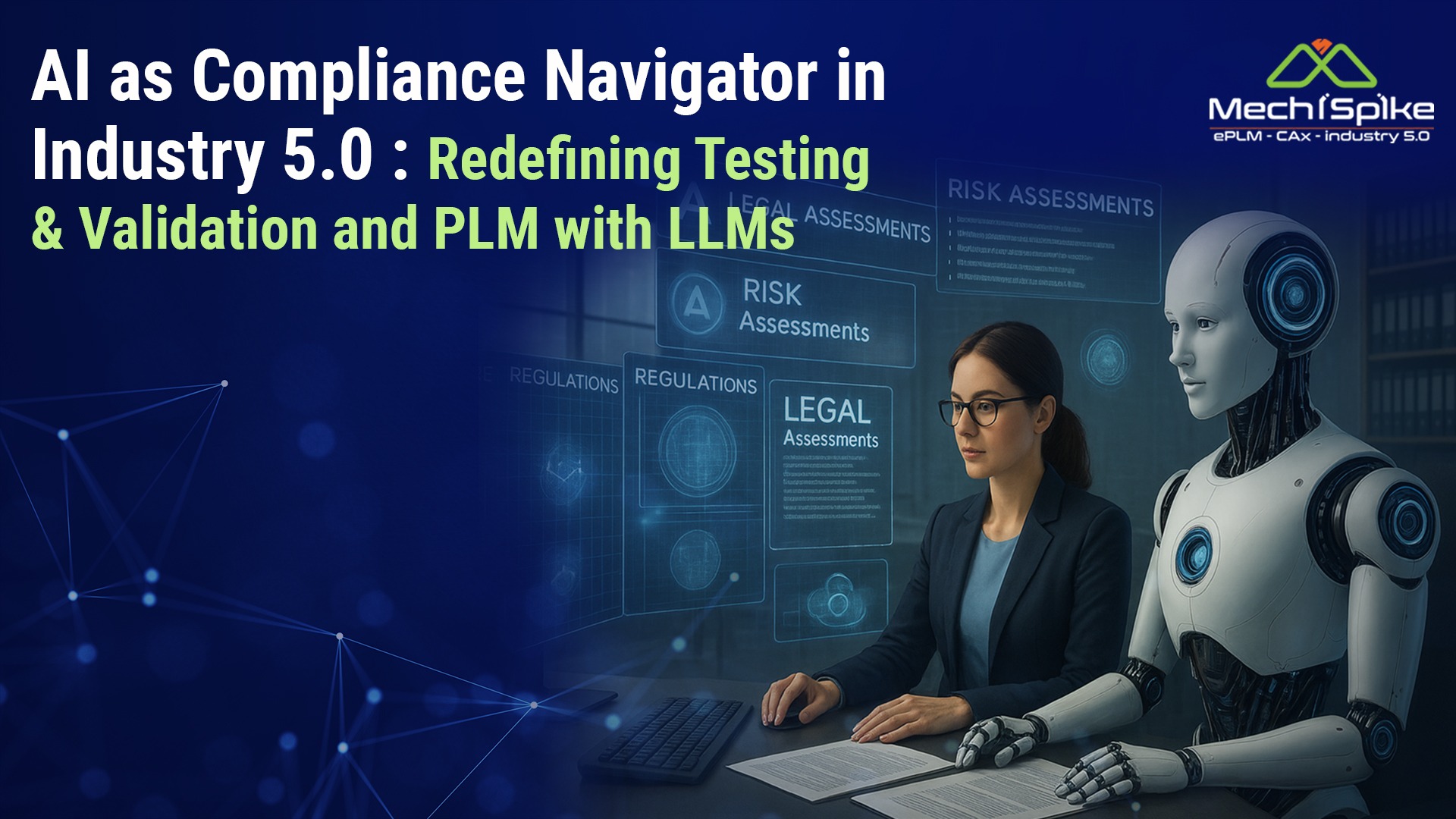
LLMs as Engineering Co-Pilots: Transforming Design & Development & PLM with AI
In this article, let’s deep dive into how AI with LLMs are Transforming Design & Development and PLM in the new Industry 5.0 Era.
LLMs as Engineering Co-Pilots: Transforming Design & Development & PLM with AI
In the fast-evolving world of Industry 5.0, where human creativity and advanced technologies collaborate seamlessly, Large Language Models (LLMs)are emerging as trusted “engineering co-pilots.”
From product ideation to full-scale design and development, LLMs can redefine how engineering teams approach creativity, accuracy, and efficiency.
They might not replace human engineers but surely will be empowering them with intelligent assistance to design better, faster, and smarter.
This article explores how AI with LLMs are reshaping the design and development of product engineering, what product manufacturers must ensure to harness them effectively, and the people skills organizations will need in this new era.
The Design & Development Stage: Heart of Product Engineering
The design and development phase of engineering is the foundation on which successful products are built. It involves multiple interconnected activities:
- Conceptual Design – Translating customer needs into initial concepts.
- CAD Modeling – Creating detailed 2D and 3D computer-aided designs of components and assemblies.
- Simulation & Analysis – Running simulations (stress analysis, thermal performance, fluid dynamics, etc.) to validate the design virtually.
- Material Selection – Identifying the right materials for performance, cost, and sustainability.
- Bill of Materials (BOM) Creation – Structuring parts, subassemblies, and components into a complete BOM for manufacturing readiness.
- Documentation & Collaboration – Producing drawings, specifications, and technical documents to communicate across teams and suppliers.
All of this is supported by Product Lifecycle Management (PLM) systems, which store CAD files, maintain version history, manage approvals, and ensure traceability of engineering documents.
While these processes are rigorous, they are also time-intensive and knowledge-heavy. Engineers often spend significant effort searching for prior designs, reusing knowledge, troubleshooting simulation results, or ensuring compliance with standards. This is where LLMs can step in as co-pilots.
How LLMs Act as Engineering Co-Pilots
Unlike traditional software tools, LLMs are not passive systems—they actively interpret natural language, understand engineering context, and provide intelligent assistance. Let’s see how they can transform each stage of design and development:
1. CAD Model Assistance
LLMs trained on design principles and CAD APIs/MCPs can:
- Generate design suggestions from textual requirements.
- Recommend standard/Compliant parts (e.g., fasteners, bearings) from company libraries.
- Help automate repetitive CAD tasks such as naming conventions, part numbering, or constraint checks.
Example: An engineer types, “Create a 3D model of an aluminum bracket with 100mm base and 4 mounting holes”—the LLM can guide CAD software to generate the base geometry, saving hours of manual modeling.
2. Simulation Guidance
Running simulations often involves complex setup and parameter tuning. LLMs can:
- Suggest appropriate boundary conditions or meshing strategies.
- Interpret simulation results and highlight key design risks.
- Recommend corrective design changes to meet load or thermal requirements.
Example: After a finite element analysis shows excessive stress in a joint, the LLM may suggest design alternatives such as thicker fillets or material substitution.
3. Material Selection
LLMs integrated with material databases can:
- Propose the best-fit material for strength, weight, cost, and sustainability.
- Flag compliance risks (e.g., REACH, RoHS regulations).
- Suggest innovative alternatives like composites or biodegradable polymers.
Example: For a lightweight automotive component, the LLM might recommend a magnesium alloy instead of steel, with clear pros and cons.
4. BOM Creation & Validation
BOM creation is prone to errors—duplicate parts, inconsistent naming, or missing metadata. LLMs can:
- Automatically generate BOMs from CAD assemblies.
- Check for completeness and accuracy, ensuring version consistency in PLM.
- Suggest cost-saving alternatives by flagging redundant components.
5. Engineering Documentation
LLMs excel at natural language generation. They can:
- Draft design reports, user manuals, or compliance documents.
- Translate technical content into supplier-friendly formats.
- Extract knowledge from previous projects to improve documentation.
Specific Requirements for Effective LLM Usage
To unlock the full potential of LLMs in engineering, product manufacturers must ensure:
- Data Integration – LLMs need secure access to CAD, PLM, ERP, and simulation data.
- Domain-Specific Training – LLMs should be fine-tuned with engineering data, standards, and company-specific knowledge.
- Human-in-the-Loop Validation – LLMs assist, but final decisions must remain with engineers.
- Security & IP Protection – Safeguards are critical to prevent leakage of sensitive design data.
- Compliance Alignment – LLMs should be aligned with industry regulations (aerospace, automotive, medical devices, etc.).
Steps for Manufacturers to Utilize LLMs in Design & Development
To implement LLMs as engineering co-pilots, manufacturers should follow a structured roadmap:
- Identify Use Cases – Start with high-value areas like design automation, simulation setup, or documentation generation.
- Integrate with PLM & CAD Tools – Connect LLMs with existing engineering software for real-time assistance.
- Build Knowledge Bases – Organize historical designs, lessons learned, and material libraries to train LLMs.
- Pilot Projects – Test LLM applications on limited projects to measure productivity and accuracy gains.
- Ensure Data Governance – Define access rules, approval workflows, and IP protection policies.
- Scale Gradually – Roll out across engineering functions once results are validated.
- Continuous Improvement – Regularly fine-tune LLMs with new project data and feedback loops.
People Skills Needed for effective LLM usage in the Industry 5.0 Era
While LLMs bring automation and intelligence, human skills remain irreplaceable. Companies will need engineers who can combine technical knowledge with AI collaboration skills.
Key skills include:
- Prompt Engineering – Crafting precise questions and instructions to guide LLMs effectively.
- Critical Thinking – Validating LLM outputs and making informed trade-offs.
- Cross-Disciplinary Knowledge – Understanding mechanics, electronics, materials, and sustainability aspects holistically.
- Ethical & Compliance Awareness – Ensuring AI-driven designs meet safety and regulatory standards.
- Collaboration & Communication – Explaining AI-assisted insights to non-technical stakeholders and suppliers.
- Adaptability & Lifelong Learning – Continuously updating skills as AI and engineering tools evolve.
Conclusion
In the Industry 5.0 era, Large Language Models (LLMs) are not just tools—they are co-pilots for engineers, helping them navigate the complexities of design and development.
By accelerating CAD modeling, guiding simulations, optimizing material selection, streamlining BOM creation, and enhancing documentation, LLMs can empower human creativity with machine intelligence.
For manufacturers, the journey requires more than just adopting AI—it demands data readiness, secure integration, and upskilling of people.
Those who embrace LLMs as engineering co-pilots will not only accelerate product development cycles but also build more sustainable, innovative, and competitive products for the future.
MechiSpike can be of great help to take your organization to the future of manufacturing with our expertise in Engineering Solutionsusing our prowess in PLM, Engineering and IT Digital.
Click here to know more about us.
For Corporates :
MechiSpike can be of great help to your organization to help you improve your PLM ROI and 30% Savings, be it the hiring cost in staffing or setting up an ODC.
We do this with efficient planning, organizing and controlling Product Master data with seamless data exchange among Engineering, Manufacturing and Enterprise systems.
With our well established niche expertise in PLM, we are now serving more than 15 Global Clients. They are now looking at us as a ‘Go To’ partner for Engineering, IT and PLM. With this confidence, we are expanding our scope of services beyond PLM to Industry 5.0 Digital Transformation i.e. PLM, ERP, CAD, Cloud, AI and DevOps.
Why MechiSpike :

RightSourcing is ‘Better Outsourcing’, given to ‘NICHE EXPERTS’.

Click here to know how we can actually help you with our Proven Methodologies.
For PLM Careers :
Learn More | Earn More | Grow More
Interactive UI : Every Application will get a response with a recruiter contact details and the applicant will get a notification at each phase until the applicant is positioned well with our 15+ global clients in India, USA & Germany.
Candidate Referral Program : Refer a candidate and earn INR 25,000.
Mechispike Solutions Pvt Ltd is a PLM focused company, having all kinds of PLM projects to enable employee career growth and add value to clients. We can position you better with our 15+ global clients in India, USA & Germany.
We believe in “Grow Together” and “Employee First” culture.
Dream more than a Job. Grow your PLM Career to the Fullest with MechiSpike
Click Here to explore our Job Openings.
Subscribe Now :
Our mission : To equip you with the knowledge and tools you need to drive value, streamline operations, and maximize return on investment from your PLM initiatives.
PLM ROI Newsletter will guide you through a comprehensive roadmap to help you unlock the full potential of your PLM investment.
We are committed to be your trusted source of knowledge and support throughout your PLM journey. Our team of experts and thought leaders will bring you actionable insights, best practices, case studies, and the latest trends in PLM.
Subscribe Now to get this weekly series delivered into your Inbox directly, as and when we publish it.
To your PLM success!
Warm regards,
Visit Us: www.mechispike.com
If you want to Grow your PLM Career to the Fullest, Click Here to explore our Job Openings.
For PLM Services : Click Here to Schedule a Call with us.
___


